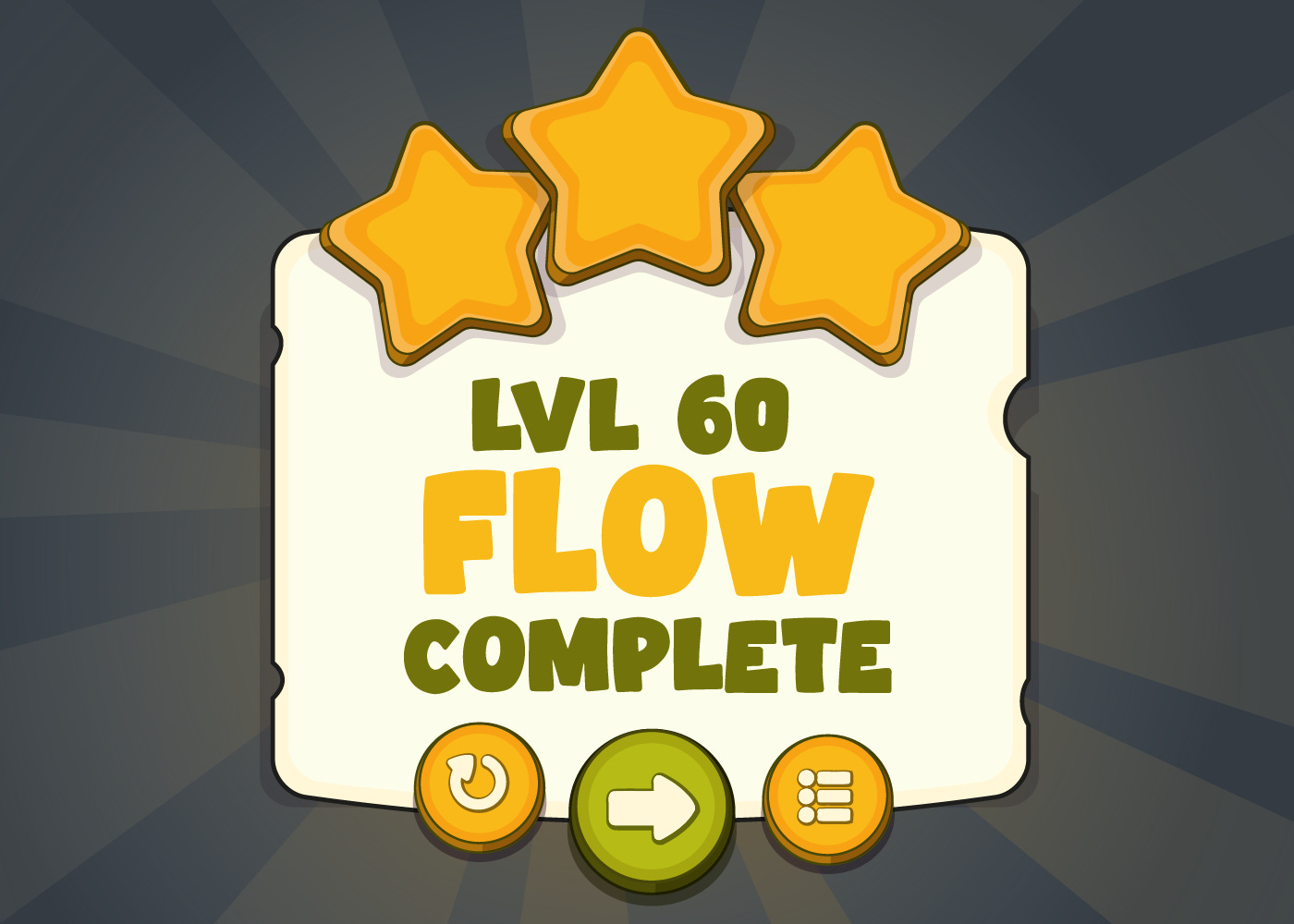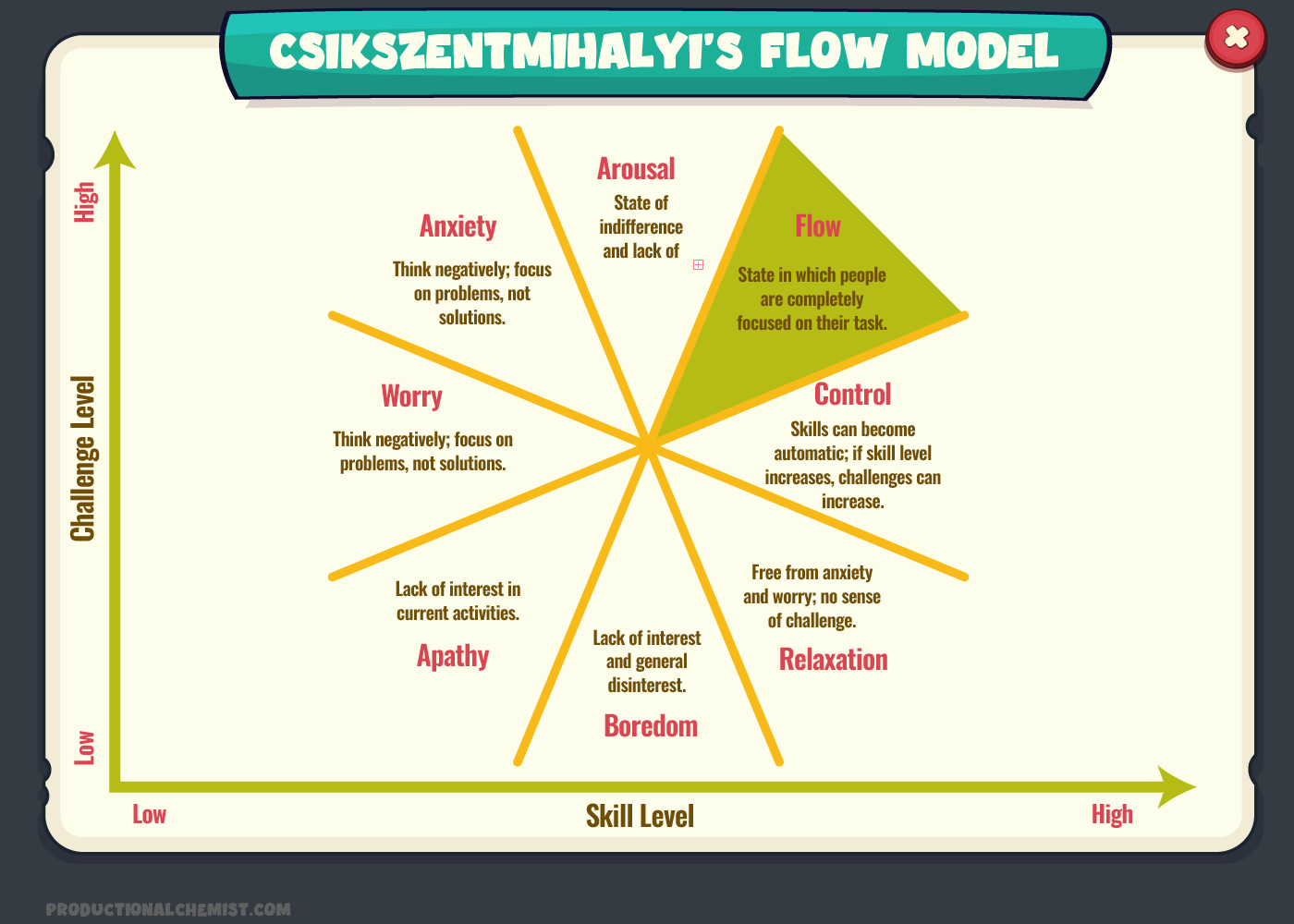Why Producers Should Understand Flow: Boosting Productivity, Creativity, and Team Well-Being
Creating an environment conducive to flow is the game producer’s hidden superpower.
Deep Dive by NotebookLM.
Flow is a mental state in which people are fully engaged, focused, and performing at their best. It leads to higher productivity and creativity.
Game producers can foster flow by setting clear goals, minimising distractions, balancing challenge and skill, and encouraging deep work.
Creating a flow-friendly work environment results in better games, a more motivated team, and a more fulfilling development process.
My regular readers know I write a lot about Flow Metrics and Kanban Flow, focusing on how work moves efficiently through a system. But flow isn’t just about workflow; it’s also about how people experience their work.
In this post, I want to take a step back and focus on flow: what it is, why it matters, and how to create an environment where it can thrive.
One of the most valuable skills you can develop as a game producer is the ability to foster flow within your team. When people are fully immersed in their work, free from distractions, challenged at the right level, and receiving immediate feedback, they perform at their best. Flow leads to higher productivity, greater creativity, and better game quality.
To build great games, you must create an environment where flow happens naturally. Let’s explore how to make that a reality.
What is Flow?
Mihaly Csikszentmihalyi’s book Flow distils decades of research into what makes life truly enjoyable. His work focuses on the positive aspects of human experience, including joy, creativity, and deep engagement—the state he calls flow.
Flow is a mental state in which attention is fully absorbed in an activity. There is no mental clutter, distractions, or sense of struggle; it is just smooth, focused engagement. People often describe it as “floating” or “being carried by the flow.”
Rather than offering simplistic “how-to” advice on happiness, Flow scientifically explores the mind. It explains how mastering attention and shaping subjective experience can lead to a more fulfilling life. The book blends research findings with real-world examples, making complex ideas accessible without relying on academic jargon.
Psychologists describe flow as negentropy, the opposite of psychic entropy. Instead of scattered or wasted mental energy, attention is fully aligned with a chosen goal, creating an effortless sense of progress.
Flow isn’t just about working efficiently; it’s about feeling deeply engaged, motivated, and joyful. While the main text of Flow is written for a general audience, the book includes extensive notes and references for those interested in exploring the psychological studies behind its conclusions.
Key Conditions for Flow
Not every task creates flow. Certain conditions must be in place:
Clear Goals and Immediate Feedback
Flow happens when there’s a clear objective and instant feedback on progress. For example, a tennis player knows they must return the ball, and a chess player knows they must checkmate the king. This clarity allows the mind to focus without uncertainty.
Even outside of competitive settings, immediate feedback matters. A blind person interviewed in Csikszentmihalyi’s studies emphasised how crucial feedback is in activities they enjoy—it provides a sense of direction and engagement.
Intense Focus on the Task
Distractions interrupt the flow. One must focus entirely on the task to stay in flow, leaving no room for unrelated thoughts, worries, or external pressures.
Flow is often described as complete absorption—your attention is locked in, and the outside world fades away.
The Right Balance of Challenge and Skill
Flow occurs when a task is challenging but not overwhelming. If it's too easy, it leads to boredom; if it’s too hard, it creates frustration.
The ideal state is when a person’s skills match or slightly exceed the difficulty level, pushing them just enough to stay engaged without feeling defeated. Studies suggest the flow is most common when challenges and skills are slightly above a person’s usual level, stretching their abilities but remaining within reach.
A Sense of Control
People in flow often feel they control their actions and the situation. This doesn’t mean micromanaging every detail—it’s more about confidence in their ability to navigate the task, adjust as needed, and keep progressing.
Loss of Self-Consciousness
In flow, self-awareness fades. There’s no worrying about how you look, whether you’re being judged or making mistakes.
This lack of self-consciousness frees up mental energy, allowing deeper immersion in the activity.
Distorted Sense of Time
Time often seems to warp during flow. A person might start working, only to look up hours later, surprised at how much time has passed.
This effect occurs because the brain stops tracking time in the usual way and instead focuses on the task itself.
The Activity Feels Intrinsically Rewarding
The most potent aspect of flow is that the activity becomes deeply satisfying, regardless of external rewards. People in flow aren’t working for praise, money, or status—they’re simply enjoying the act of doing.
This explains why artists, athletes, and programmers often lose themselves in their craft. The joy comes from the process, not just the outcome.
The Practical Power of Flow
Flow isn’t just a theoretical concept; it’s a measurable experience that improves focus, performance, and overall well-being. The conditions for flow remain the same in sports, creative work, or problem-solving.
In an interview with Wired magazine, Csíkszentmihályi described flow as "being completely involved in an activity for its own sake. The ego falls away. Time flies. Every action, movement, and thought follows inevitably from the previous one, like playing jazz. Your whole being is involved, and you're using your skills to the utmost."1
By designing work environments and daily routines that encourage flow, people can increase productivity, reduce stress, and find more enjoyment in what they do.
Finding the Right Balance
Achieving flow requires the right balance between challenge and skill. If the challenge is too high, frustration and anxiety take over. If it’s too low, boredom sets in. When both are low, the result is apathy—no motivation to engage.
In 1987, Csikszentmihályi, Fausto Massimini, and Massimo Carli introduced the Eight Channel Model, which maps mental states based on challenge and skill levels. Flow only occurs when both are high, creating a state of deep involvement, enjoyment, and optimal performance.
Striking this balance isn’t always easy, but it leads to greater focus, creativity, and satisfaction when done well.
How Can a Game Producer Impact Flow?
A game producer plays a key role in creating the conditions that allow team members to achieve flow. This means reducing distractions, ensuring clarity, and structuring work to keep developers and creatives engaged and motivated.
Here’s how a producer can help:
Set Clear Goals and Priorities
Unclear objectives kill focus. Ensure every team member knows exactly what they need to achieve and why it matters. Right-size high-level goals into smaller, actionable tasks that provide a clear sense of direction.
Minimise Disruptions
Constant interruptions pull developers out of flow, making it harder to get back in. Protect their focus by:
Reducing unnecessary meetings.
Clustering discussions rather than spreading them throughout the day.
Acting as a shield against unplanned requests and distractions from stakeholders.
Balance Challenge and Skill
Work should be engaging but not overwhelming. Assign tasks that stretch individual skills just enough to promote growth without causing frustration. If someone feels stuck, provide support or adjust the task to match their experience level.
Encourage Deep Work
Developers and other creatives do their best work when they can concentrate for extended periods. Create an environment that supports deep work by:
Promoting quiet, focused time with minimal interruptions.
Encouraging the use of time-blocking or dedicated coding/design periods.
Providing tools and processes that reduce cognitive load (e.g., well-structured documentation, automated workflows).
Provide Immediate Feedback
Long feedback loops kill momentum. Ensure quick and constructive feedback through:
Regular check-ins that don’t disrupt focus.
Fast iteration cycles that allow developers to see progress.
Playtests and builds that provide instant validation of their work.
Foster Ownership and Autonomy
Micromanagement kills flow. Instead, give team members the space to make decisions and solve problems independently. Trust them to self-manage tasks while ensuring they have the support they need when they need it.
Reduce WIP (Work in Progress)
Juggling too many tasks at once leads to context-switching, which destroys focus. Use Kanban principles to limit WIP and keep work flowing smoothly. Encourage finishing tasks before starting new ones.
Make Work Meaningful
People engage more deeply when they see the value of their work. Help team members connect their tasks to the bigger picture, whether delivering a great gameplay experience, improving player retention, or enhancing a game’s visuals.
Recognise Small Wins
Flow thrives on a sense of progress. Celebrate completed tasks, successful builds, and creative breakthroughs. Acknowledging even small milestones keeps morale high and motivation strong.
Build a Culture That Supports Flow
Encourage a team culture where the focus is respected. That means:
Avoiding last-minute changes that derail progress.
Setting realistic deadlines to prevent crunch.
Supporting breaks and recovery time; intense flow and mental resets are necessary.
A producer who prioritises these principles helps their team do their best work efficiently and enjoyably.
Unlocking Flow: The Key to Better Work and Creativity
Flow isn’t just a concept; it’s a powerful state that enhances focus, creativity, and overall well-being. In game development or any other field, creating the right conditions for flow leads to better results and a more fulfilling work experience.
As a game producer, your role goes beyond managing schedules and tasks. You can shape an environment where your team can do their best work without unnecessary stress or distractions. By setting clear goals, reducing interruptions, balancing challenge with skill, and fostering a culture of autonomy and deep work, you help unlock higher productivity, stronger engagement, and better games.
Take a step back and assess your team’s workflow. Can they focus without constant disruptions? Do they feel challenged but not overwhelmed? Making small adjustments can have a huge impact on team morale, efficiency, and the quality of the final product.
Start today. Look for ways to remove obstacles, streamline processes, and help your team find their flow. The results will speak for themselves.
https://en.wikipedia.org/wiki/Mihaly_Csikszentmihalyi




